James, Nick, Tommy, Constantine, Joyce and Ella from the Battalion Hawk Bloggers asked, "Did you have to dip the pen in ink before writing?"
You will need to scroll down the comments for this post.
Pen, Paper and Inkwell
When I was in school, students in Grade 3 and above used ink and pens to write. When I started Grade 3, I became one of the inkwell monitors. It was our job to make certain each small inkwell in the desks had ink for the day. When writing, we'd dip the pen nib in the ink, wipe off the excess on the sides of the inkwell and start writing.
We would be in trouble if we smudged the ink on the page. This made it very hard for left hand writers. They would have to twist their hand around so they wouldn't smudge the ink. It's part of the reason children were once in trouble if they wrote with their left hand. I can remember some being hit on the hand with a ruler if they did. Luckily that old fashioned idea disappeared many years ago and modern pens don't have to be held correctly (but it's better if they are).
While I was in Grade 3, we were finally allowed to use ballpoint pens so I lost my job as inkwell monitor. You will find many people still enjoy the feel of pen in hand and writing on paper. They like the art in calligraphy (handwriting). You don't need to plug your pen into power.
When using pen and paper, it isn't as easy to change errors. You can't cut and paste as on a computer but, for those who enjoy handwriting, the writing they do with pen and paper is much more personal. You can't push a button and send it around the world but it can be scanned or sent my snail mail.
For fun, I had made old fashioned feather pens, some with metal nibs, for some of my classes to use. There were smudges, fingers blue with ink and strange scratches on their page but they always seemed to enjoy the experience.
Here are some photos of the pens used.
I had a look into my stored resources and brought out the old pens I made for my classes. The feathers may be a little old and worn but the pens still work after about 12 years. There were still blue ink bottles with them although I also had other coloured inks.
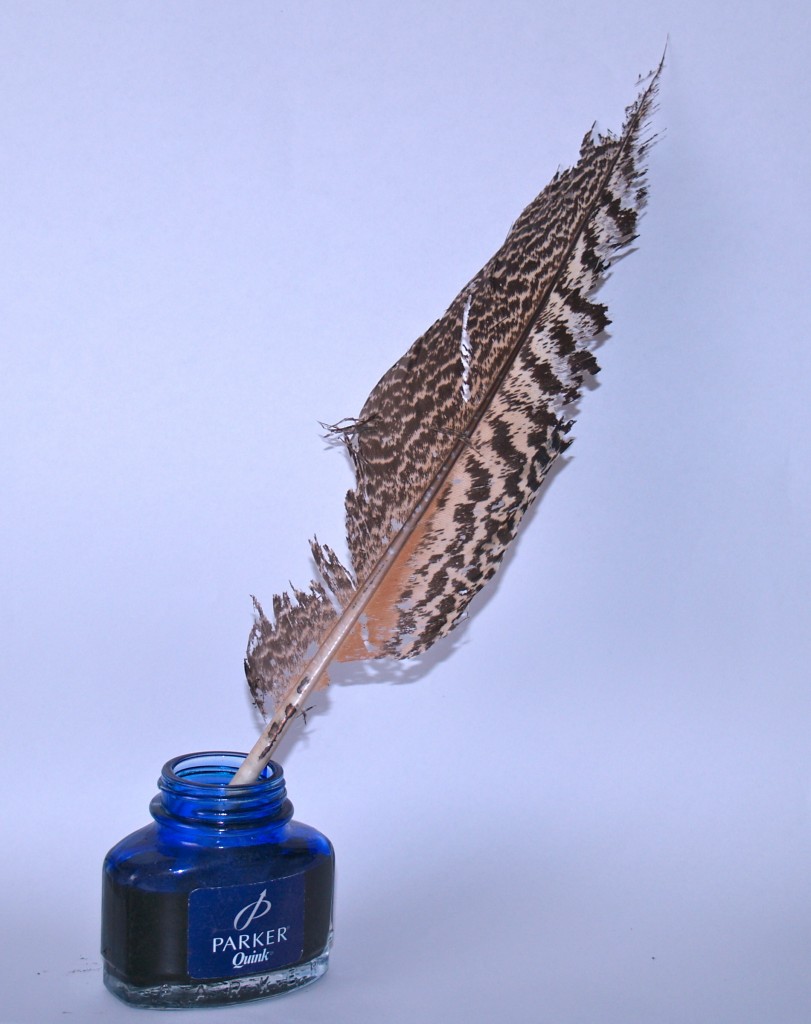
Schools and students have permission to use this graphic for non-commercial, educational purposes.
The basic feather pen was just a strong feather cut to have a point. A small slice along the point helped the ink to flow.
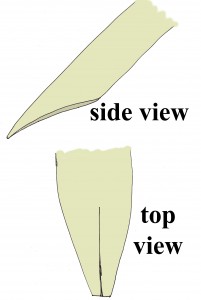
Schools and students have permission to use this graphic for non-commercial, educational purposes.
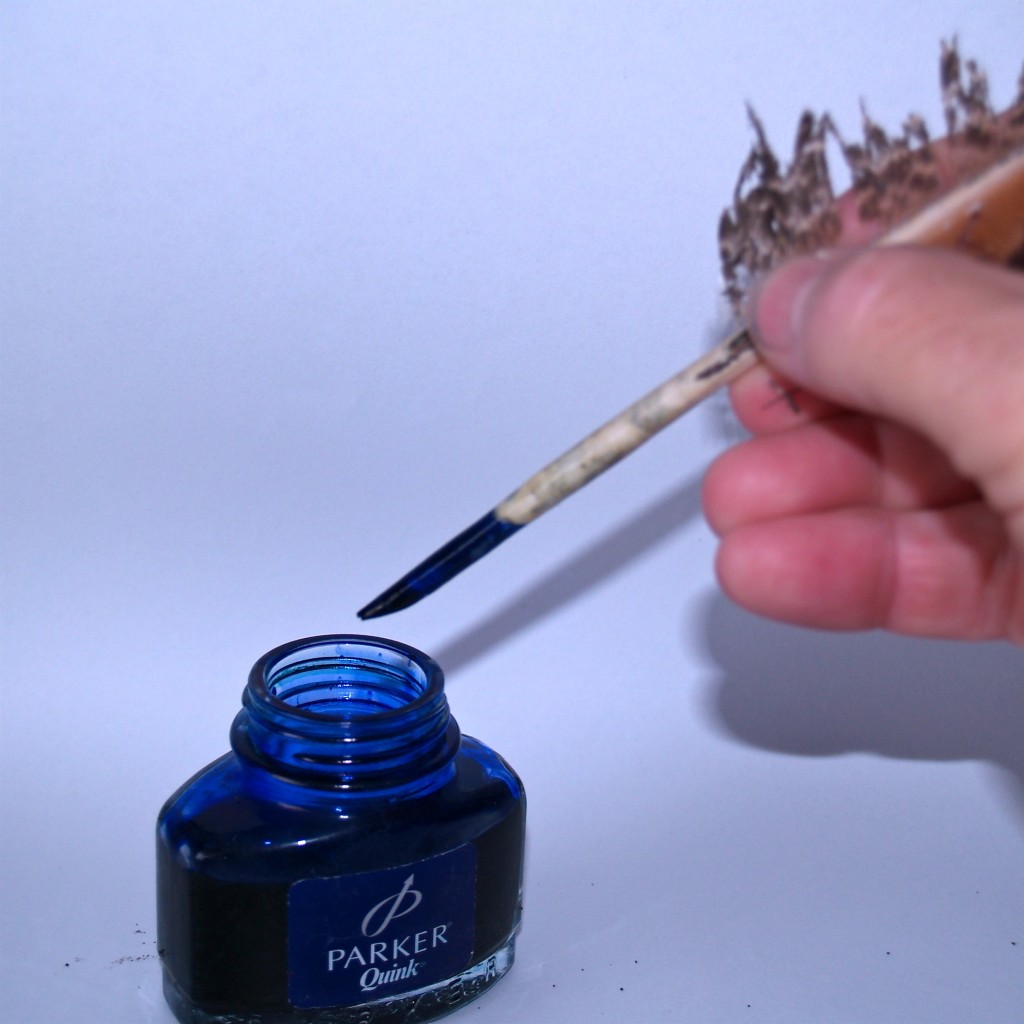
Schools and students have permission to use this graphic for non-commercial, educational purposes.
Being a feather, the pen would blunt with use and need to be trimmed back into shape. To make this feather pen, I simply collected and cut large strong feathers. They cost nothing to make but cutting with a sharp blade is best left for adults.

Schools and students have permission to use this graphic for non-commercial, educational purposes.
A more expensive option was to use feathers but add a metal pen nib as a point. The writing would be finer and the pen didn't need to be regularly trimmed.
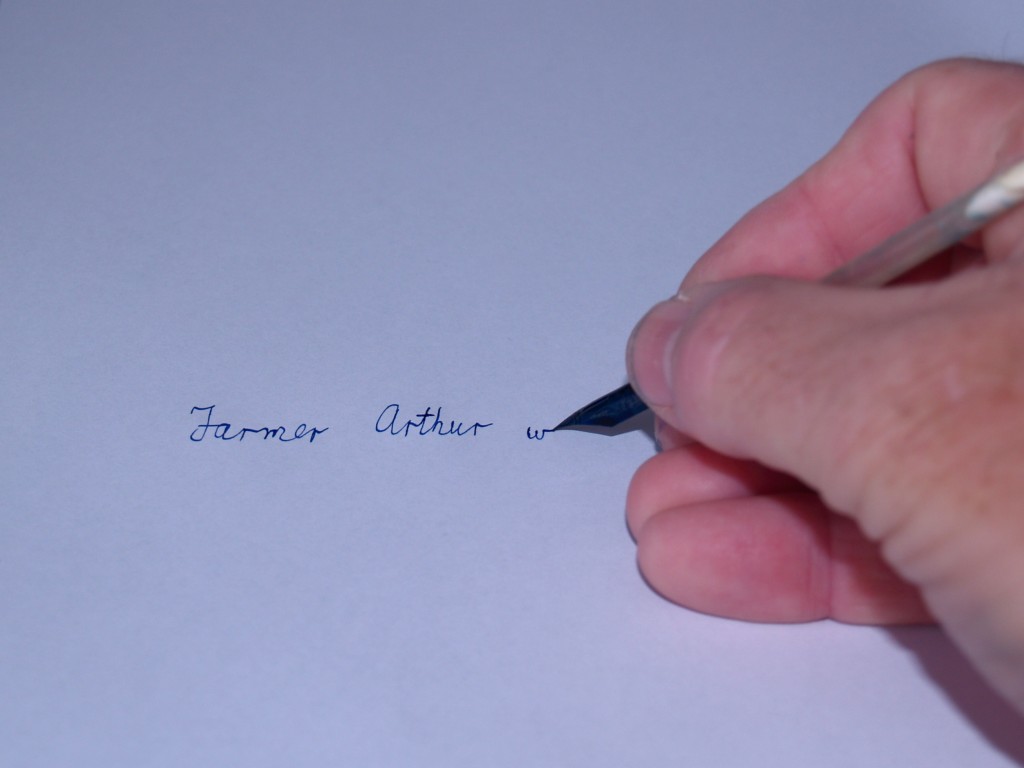
Schools and students have permission to use this graphic for non-commercial, educational purposes.
When I used pen and inkwell in class, we had plastic pens with metal nibs. If you didn't hold them correctly your writing would look scratchy or might be smudged. The pen below is very similar to the pens I used in class.
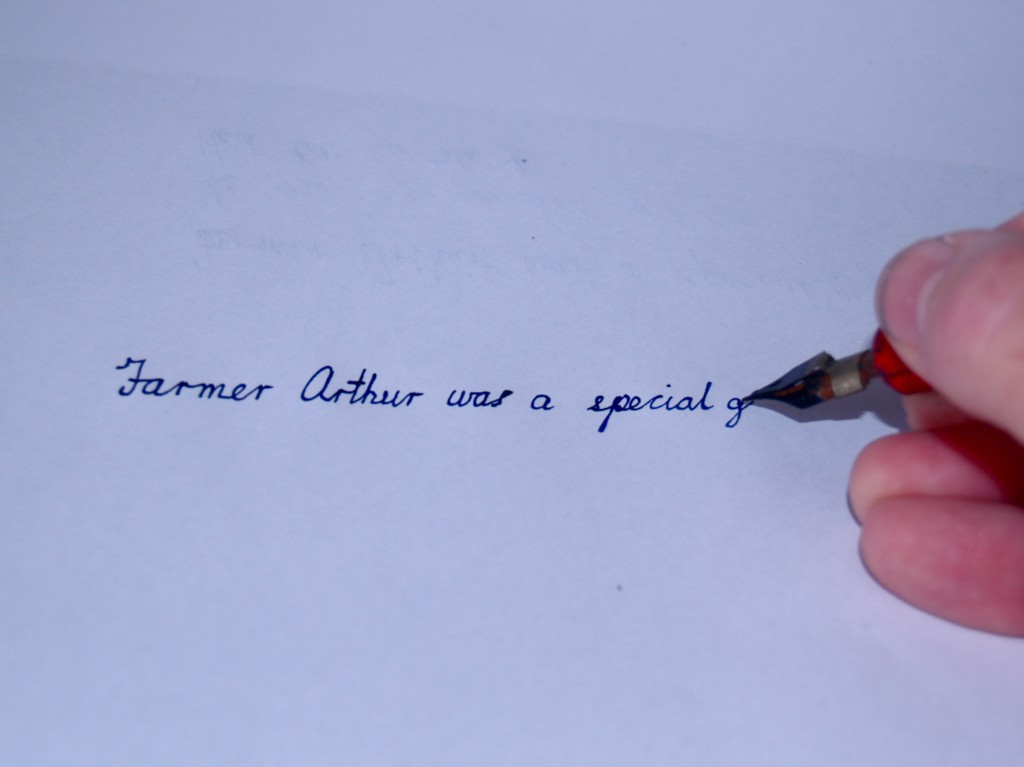
Schools and students have permission to use this graphic for non-commercial, educational purposes.
A few times I have mentioned holding the pen correctly. Here is a small graphic I drew many years back to show students how a pen is best held. It was based on the method advised by our Department of Education.

Schools and students have permission to use this graphic for non-commercial, educational purposes.
Writing with pen and paper is an art form when we take the time. The flow of characters across the page and the feel of the pen is very different to the tapping of keys. While I seldom write more than notes on paper because of the lack of time and ease of sending text by computer, I still have a place for pen, paper and inkwell. If the power fails, my pen and paper won't. 🙂
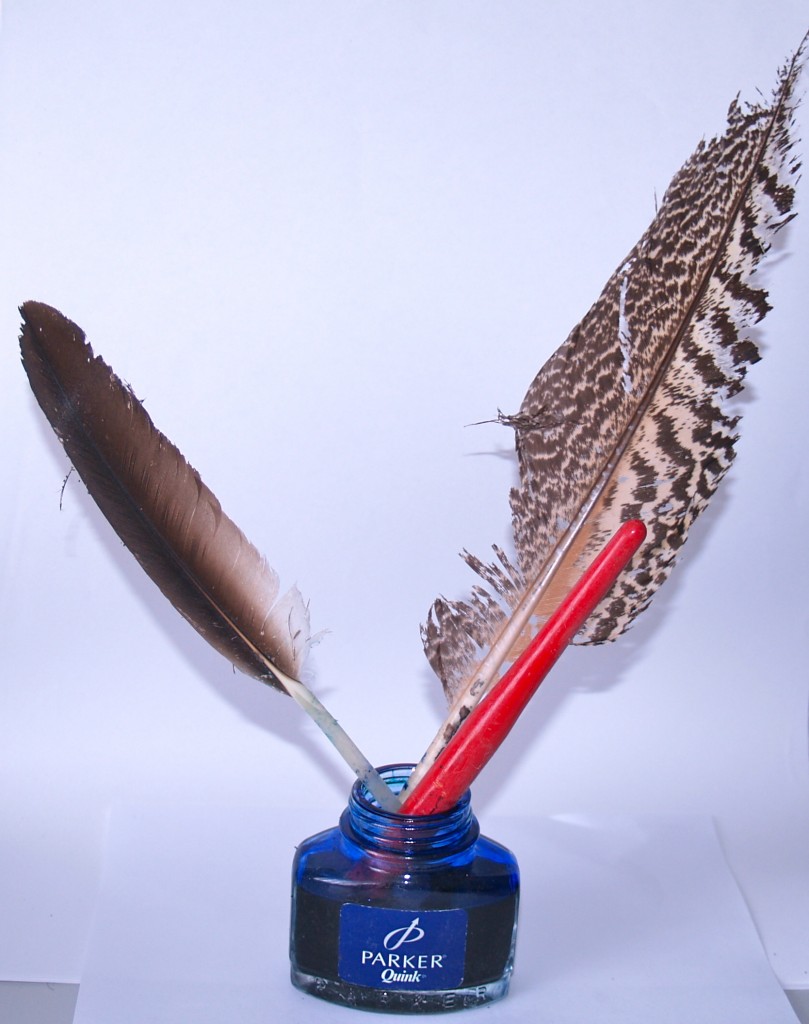
Schools and students have permission to use this graphic for non-commercial, educational purposes.
What do you think?
In response to a question from Christopher, Dimitri, and Tre, I am adding a photo of my Grade 3 room as it looked in 2000. I had returned to my old school as a teacher and was there for over twelve years. The old wooden building held two small classrooms. My third grade room was in the end closest to the camera. There were 44 students in my class. There was no room for group activities. When inside, we stayed at our desks. Each desk was permanently screwed to the floor and had a fold down seat for two. The front of your desk was the back of the seat of another. Grade 3 classes now normally have about 25 to 30 students. My old Grade 3 classroom no longer had any fixed desks when I returned as a teacher. It was used as a craft room.

Schools and students have permission to use this graphic for non-commercial, educational purposes.









